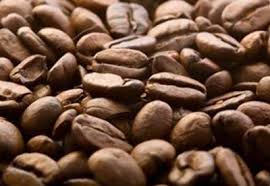Tuesday, 14 July 2015 17:14
 HANOI: Vietnam coffee prices have started to recover following gains in the global futures market, but high inventory has stalled buying interest, traders said on Tuesday. Trading in robustas from the new 2015/2016 crop has also begun, but at a slower pace, traders said.
HANOI: Vietnam coffee prices have started to recover following gains in the global futures market, but high inventory has stalled buying interest, traders said on Tuesday. Trading in robustas from the new 2015/2016 crop has also begun, but at a slower pace, traders said.
Prices of robusta beans in Vietnam, the world’s top producer of the bitter variety, rose to 36,200-37,200 dong ($ 1.62-$ 1.71) on Tuesday in Daklak, the country’s largest growing province, from 36,100-36,800 dong last Tuesday, but sales have been stagnant. Robusta bean prices of 37,200 dong per kg are the highest since July 6, Reuters data showed.
“Selling has been absent in the past week,” said a trader in Buon Ma Thuot, the capital of Daklak province, adding buying interest from roasters has been thin. Harvesting of the country’s next crop is due to begin from late October and traders said crop surveys in September would provide a better estimate of the next crop’s output.
The US Department of Agriculture has forecast Vietnam’s next crop at 28.6 million 60-kg bags, up 1.4 percent from this year.
Vietnam’s coffee crop year lasts between October and September.
September robusta futures on ICE closed up 0.9 percent at $ 1,738 a tonne on Monday, in line with gains by arabica futures, which were partly spurred by many out-of-the-money August calls that were exercised, an unusual move that lead to short-covering, traders said.
The September contract has recovered 1.6 percent from the month-low of $ 1,711 a tonne hit a week ago, nearing the key level of $ 1,800/tonne.
Traders said selling by Vietnamese speculators and some farmers could pick up if futures prices touch $ 1,800 a tonne.
Premiums of Vietnamese robusta grade 2, 5 percent black and broken widened to $ 40-$ 50 a tonne to the September contract, from premiums of $ 35-$ 50 a tonne last Tuesday.
Exporters have started offering 2015/2016 beans at par to London futures or premiums of $ 10-$ 20 a tonne, but the volumes sold were small, traders said.
“It could just be a test for the market, while stocks from the current crop are still high and we don’t see any point in buying new crop beans,” a Ho Chi Minh City-based trader said. Around 40 percent of the 2014/2015 harvest is still in the hands of speculators, businesses and some farmers, traders said.




























